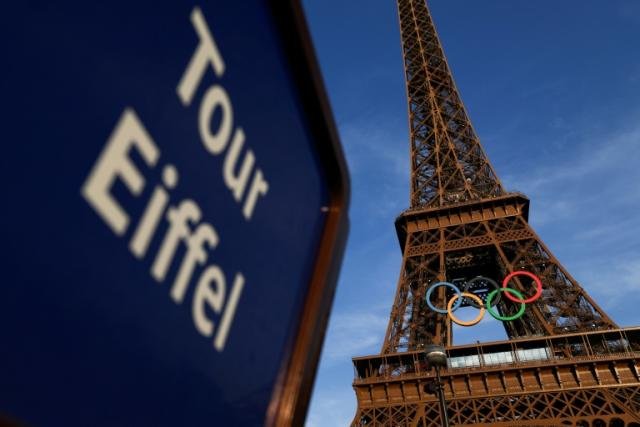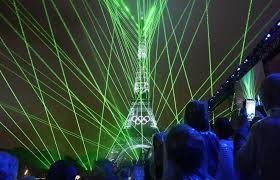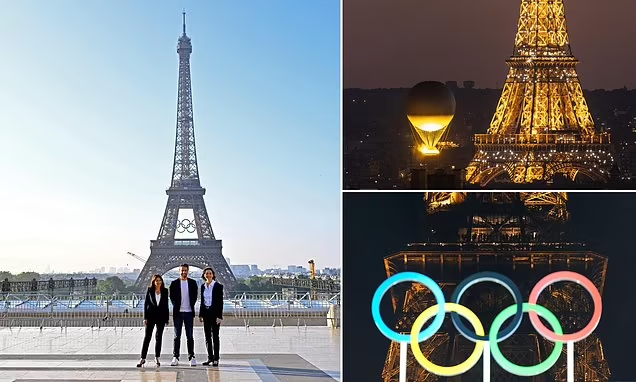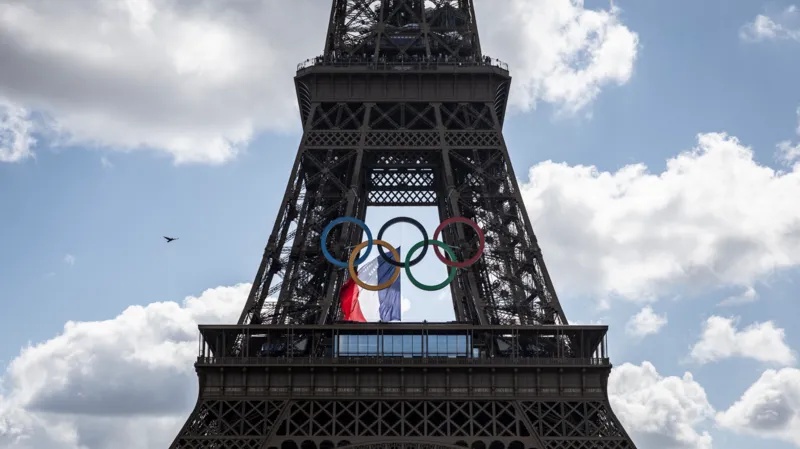Paris Mayor Anne Hidalgo’s recent announcement has sparked an important debate in the City of Light. Hidalgo has proposed to keep the iconic Olympic rings on the Eiffel Tower long after the Paris 2024 Summer Games have ended. The move, aimed at carrying forward the festive spirit of the Games, has divided public opinion and sparked a passionate discussion about the future of one of the world’s most famous landmarks. In an interview with Ouest-France, Hidalgo asserted her authority over the decision, revealing that she has the support of the International Olympic Committee (IOC). “The decision is up to me, and I have the consent of the IOC,” she declared. The five interlocking rings, symbolising the unity of the continents, were installed on the Eiffel Tower ahead of the Games opening on July 26. The rings, 29 metres wide, 15 metres high and weighing 30 tonnes, were initially intended to be removed after the Paralympics’ closing ceremony on September 8. Hidalgo plans to keep the rings in place permanently,

though she acknowledges that the current heavy structure will eventually be replaced by a lighter version. The mayor also intends to maintain the festive atmosphere that enveloped Paris during the Olympics. “The French people have fallen in love with Paris again,” Hidalgo said, highlighting a new sense of pride and joy among Parisians. The proposal has received a mixed response from the public. Some residents and visitors appreciate the vibrant addition to the Eiffel Tower, seeing the rings as a colourful enhancement that reflects the spirit of the Games. “The Eiffel Tower is very beautiful, and the rings add color. It’s great to see it like this,” said Solene, a young Paris resident, in an interview with France Bleu. However, the proposal has also received considerable criticism. Heritage advocates and some locals argue that the rings harm the beauty and historical integrity of the Eiffel Tower. Paris resident Manon strongly objected:

“It’s a historical monument. Why defile it with the rings? It was good for the Olympics, but now it’s over. We should remove them and return the Eiffel Tower to its original state.” Criticism has also been rife on social media platforms. Christophe Robin, a user on X, suggested that Hidalgo should have consulted Parisians before making such an important decision. Robin pointed out that the Eiffel Tower has been adorned with advertisements before, such as a Citroen ad from 1925 to 1936, but this did not diminish its historical value in the same way that a permanent change might. Hidalgo’s bold reforms This proposal is not the first time Mayor Hidalgo has introduced controversial reforms. Since taking office in 2014, Hidalgo has implemented a number of bold changes in Paris, often sparking debate. Her administration has overseen the pedestrianization of many streets, including sections along the Seine River. Last year, Hidalgo succeeded in a citywide referendum

to ban rental electric scooters, although voter turnout was notably low, with less than 8% of eligible voters participating. In another controversial move, Hidalgo supported a significant increase in parking fees for sports utility vehicles (SUVs). The measure, intended to promote environmental sustainability, faced criticism from drivers’ groups and opposition figures, who argued that it disproportionately affected many family-sized vehicles and was an example of “punitive environmentalism.” Prior to the Olympics, Hidalgo and other city officials made headlines by swimming in the Seine to demonstrate its safety to the public. The stunt was part of a broader effort to enhance the river’s image and encourage recreational use. Historical and cultural context The Eiffel Tower, built for the 1889 World’s Fair, has always been the subject of public debate. Initially criticized by many prominent artists and intellectuals, the tower has since become a symbol of Paris and a global icon. Its transformation from a controversial structure to a beloved landmark reflects the evolving

nature of public opinion and cultural significance. Hidalgo’s proposal to place the Olympic rings on the tower reflects a broader trend of integrating contemporary events and symbols into historic spaces. While the intentions behind such decisions are often rooted in celebration and modern relevance, they can clash with traditional considerations of preserving historic integrity. As the debate continues, the future of the Olympic rings on the Eiffel Tower remains uncertain. Hidalgo’s plan to replace the existing heavy rings with a lighter version may alleviate some concerns, but the broader issue of altering a historic monument for contemporary purposes remains. The controversy underscores the tension between maintaining historic authenticity and embracing modern symbols of celebration and unity.
